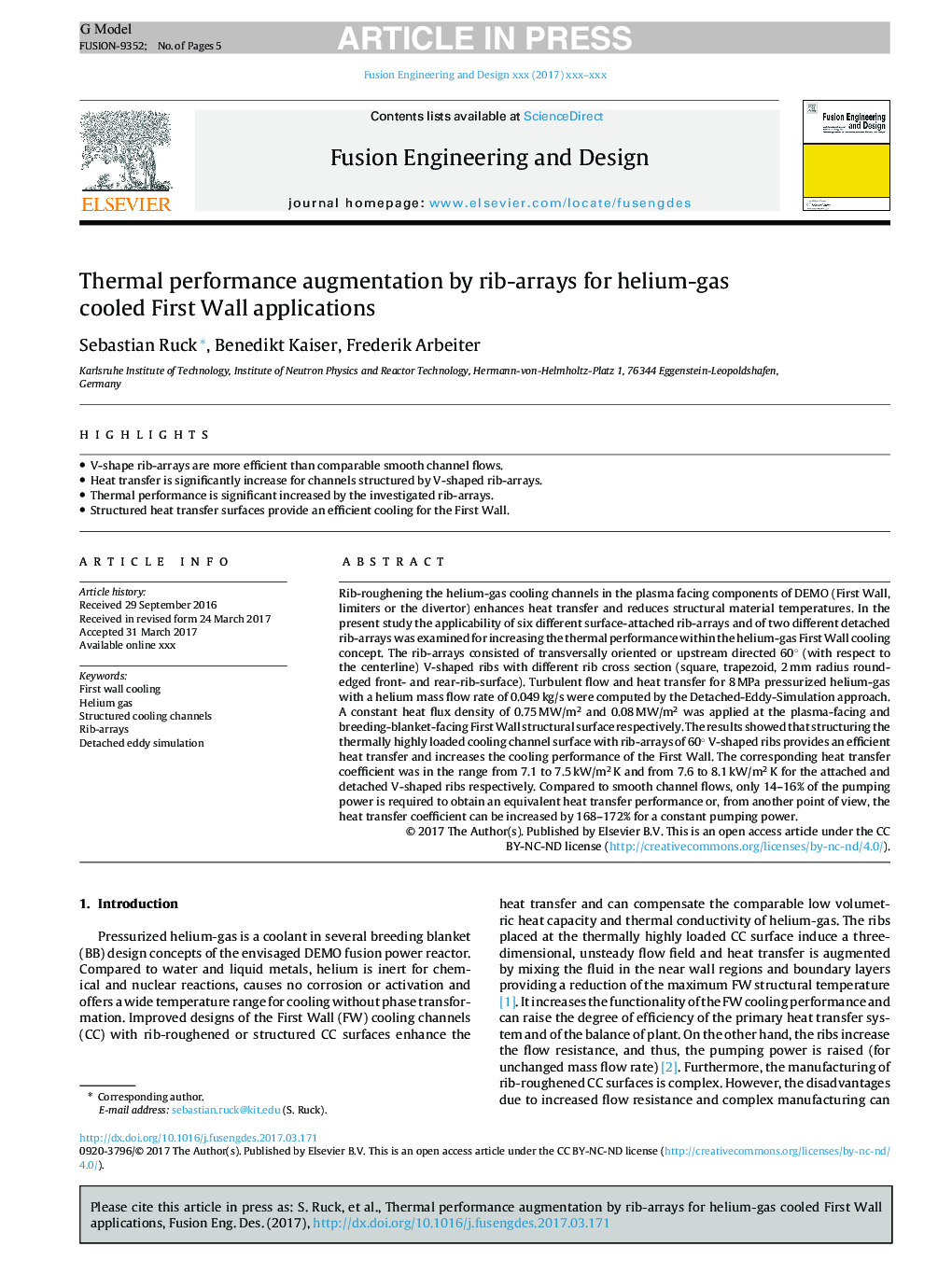| کد مقاله | کد نشریه | سال انتشار | مقاله انگلیسی | نسخه تمام متن |
|---|---|---|---|---|
| 6744307 | 1429329 | 2017 | 5 صفحه PDF | دانلود رایگان |
عنوان انگلیسی مقاله ISI
Thermal performance augmentation by rib-arrays for helium-gas cooled First Wall applications
ترجمه فارسی عنوان
تقویت عملکرد حرارتی توسط آرایه های ریز برای کاربردهای اول دیواری برای گازهای هلیوم خنک
دانلود مقاله + سفارش ترجمه
دانلود مقاله ISI انگلیسی
رایگان برای ایرانیان
کلمات کلیدی
خنک کننده دیوار اول گاز هلیوم، کانالهای خنک سازه ریب آرایه ها، شبیه سازی گرداب جداگانه،
موضوعات مرتبط
مهندسی و علوم پایه
مهندسی انرژی
مهندسی انرژی و فناوری های برق
چکیده انگلیسی
Rib-roughening the helium-gas cooling channels in the plasma facing components of DEMO (First Wall, limiters or the divertor) enhances heat transfer and reduces structural material temperatures. In the present study the applicability of six different surface-attached rib-arrays and of two different detached rib-arrays was examined for increasing the thermal performance within the helium-gas First Wall cooling concept. The rib-arrays consisted of transversally oriented or upstream directed 60° (with respect to the centerline) V-shaped ribs with different rib cross section (square, trapezoid, 2 mm radius round-edged front- and rear-rib-surface). Turbulent flow and heat transfer for 8 MPa pressurized helium-gas with a helium mass flow rate of 0.049 kg/s were computed by the Detached-Eddy-Simulation approach. A constant heat flux density of 0.75 MW/m2 and 0.08 MW/m2 was applied at the plasma-facing and breeding-blanket-facing First Wall structural surface respectively. The results showed that structuring the thermally highly loaded cooling channel surface with rib-arrays of 60° V-shaped ribs provides an efficient heat transfer and increases the cooling performance of the First Wall. The corresponding heat transfer coefficient was in the range from 7.1 to 7.5 kW/m2 K and from 7.6 to 8.1 kW/m2 K for the attached and detached V-shaped ribs respectively. Compared to smooth channel flows, only 14-16% of the pumping power is required to obtain an equivalent heat transfer performance or, from another point of view, the heat transfer coefficient can be increased by 168-172% for a constant pumping power.
ناشر
Database: Elsevier - ScienceDirect (ساینس دایرکت)
Journal: Fusion Engineering and Design - Volume 124, November 2017, Pages 306-310
Journal: Fusion Engineering and Design - Volume 124, November 2017, Pages 306-310
نویسندگان
Sebastian Ruck, Benedikt Kaiser, Frederik Arbeiter,
